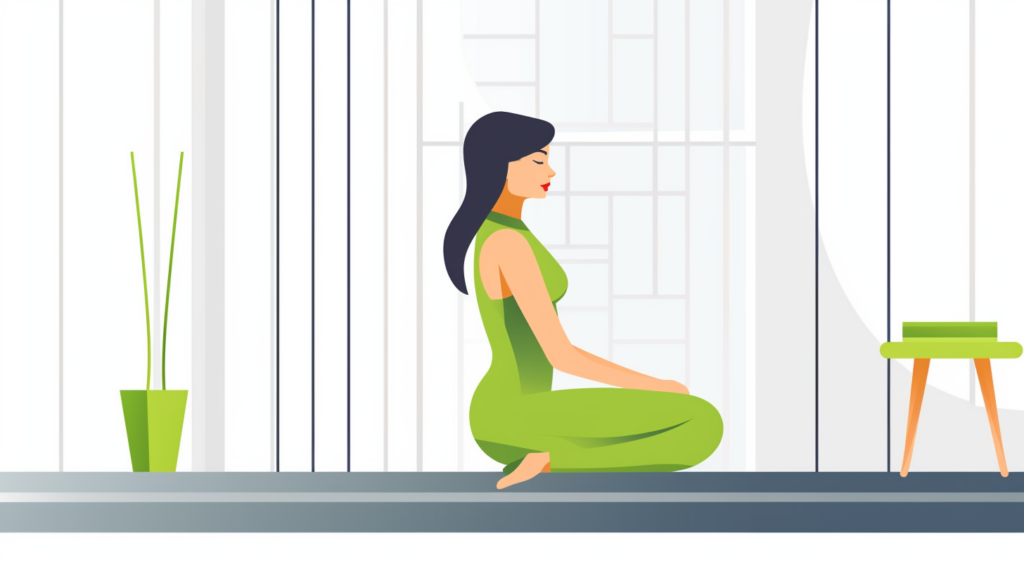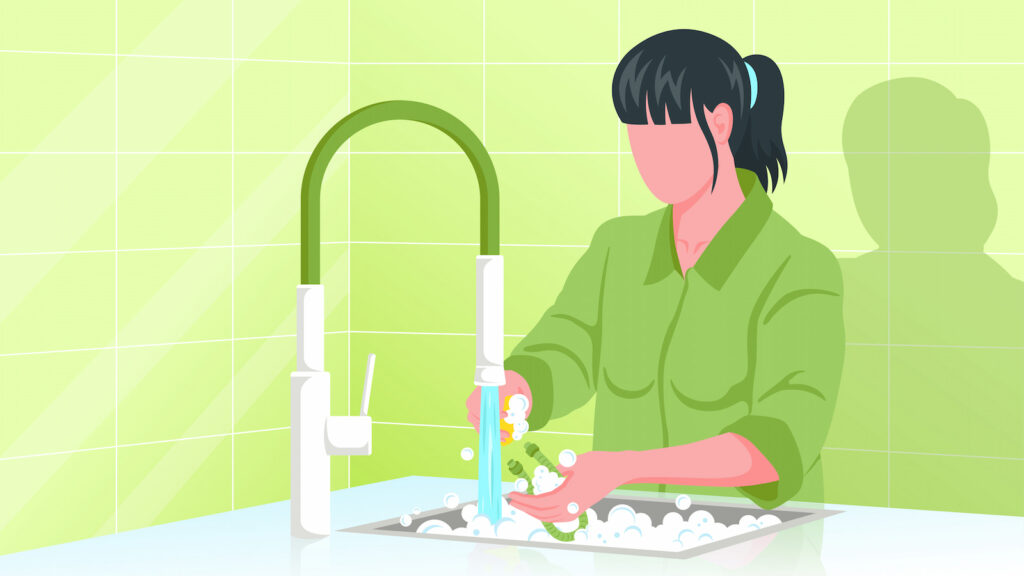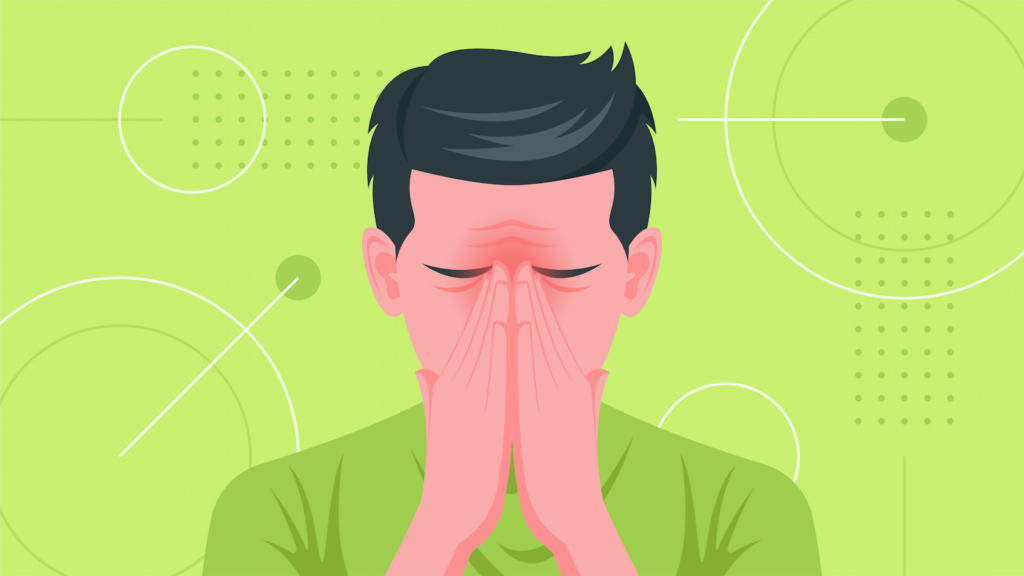It may feel overwhelming if you’ve recently been diagnosed with sleep apnea and are now facing the prospect of getting used to CPAP machines.
But remember, every journey begins with a single step, and you’ve already taken that critical first step towards better sleep and better health.
Getting used to CPAP machines is like learning a new language.
It’s initially unfamiliar, perhaps even a bit daunting, but with practice and patience, it becomes second nature.
You’re embarking on a journey that’s not just about sleep but about improving your overall quality of life.
You may encounter some bumps along the way, but each night you use your CPAP machine, you’re getting closer to achieving restful, restorative sleep.

In the following guide, we’ll be sure to provide you with the tools and tips you need to navigate your new journey.
It’s designed to support you as you get used to CPAP therapy, offering solutions to common challenges and celebrating small victories.
Remember, change often feels strange at first, and that’s okay.
With time, patience, and the right PAP therapy resources, you’ll soon find your stride on this path to better sleep.
A Brief Overview of PAP Therapy Essentials
CPAP and APAP machines are indispensable for people with sleep apnea, aiding them in attaining a better lifestyle and health.
Before we dive into what to expect and how you best transition to using one of these common medical devices, we need to briefly examine what sleep apnea is and how a CPAP machine can help.
PAP (Positive Airway Pressure) therapy is a common and effective treatment for obstructive sleep apnea, a condition where your breathing is interrupted while you sleep.
During sleep, the throat muscles can relax and narrow, interrupting normal breathing.
PAP therapy delivers a pressurized air stream via a mask to keep the throat open and ensure uninterrupted breathing during sleep.
Key Terms and Concepts Related to PAP Therapy
Here are a few important terms you’ll come across as you start your PAP therapy journey and throughout the guide:
- PAP Machine: The device that generates the pressurized air stream for therapy. It’s generally small enough to carry easily; some are even small enough for travel use. In most cases, your machine will be a CPAP or APAP machine. However, other types exist. You can learn more about the specifics in our comparison of APAP, BiPAP, and CPAP therapies.
- PAP Mask: This is what you wear on your face. Depending on the design, the mask can cover just your nose, both your nose and mouth, or use prongs that fit into your nostrils. Finding a mask that fits well and is comfortable for you is essential.
- Pressure Settings: These are set by your healthcare provider and determine how much air your PAP machine delivers.
- Ramp Function: This feature allows the pressure to slowly increase to your prescribed level, making it easier to fall asleep at the beginning of the night.
- Humidifier: Many PAP machines include a humidifier to moisten the air, which can help prevent dry mouth and throat. (See Also: CPAP Humidifier Guide)
The Goal and Benefits of Successful PAP Therapy
The primary goal of PAP therapy is to keep your airways open while you sleep, eliminating the apneas or hypopneas (partial blockages) that characterize sleep apnea.
By doing so, PAP therapy can help alleviate symptoms like loud snoring and daytime fatigue, leading to a better quality of life.
Beyond these immediate benefits, successful PAP therapy can also have a long-term positive impact on your health.
Regular use of PAP therapy has been shown to reduce the risk of heart disease, stroke, and other serious health conditions.
It can also improve mood, cognitive function, and work performance, leading to a better quality of life.

Remember, starting PAP therapy is a big step towards better health and improved quality of life.
It may take time to adjust, but the benefits are well worth the effort.
If you have questions about PAP therapy, equipment, or ways to improve your comfort, contact us at CPAP Supply.
We’d love to help you find the perfect setup for your needs.
Getting used to your CPAP device should feel like an achievable goal, not an overwhelming obstacle.
What to Expect When Starting PAP Therapy
Starting PAP therapy is likely an interesting experience for you.
After all, we don’t sleep every day with a mask on our faces.
But knowing what to expect before starting therapy can help minimize stress and discomfort and encourage continued use of your PAP machine.
Here are three common challenges you can expect during your first few nights of PAP machine use:
- Getting used to the mask: Wearing a mask might initially feel strange, and it’s normal to experience a bit of discomfort. The key is to find a comfortable position that allows the cushions or nasal pillows of your mask to seal correctly.
- Adjusting to the pressure: The air pressure might seem too high, or you might feel claustrophobic. If this is the case, remember the pressure is there to keep your airway open. You can use the ramp function to adjust to the pressure slowly.
- Falling asleep: It may take longer to fall asleep on your first few nights, which is entirely normal. You can try using relaxation techniques to help you fall asleep.
Three Tips for Adjusting To Your Therapy
Adjusting to PAP therapy doesn’t happen overnight.
Getting comfortable with the therapy can take anywhere from a few days to a few weeks.
But the benefits are well worth persisting through the initial struggles.
A key part of success is mindset and approach.
Here are three things to remember throughout your adjustment period to help ensure success.
- Patience is key: Be patient with yourself during this period. Remember, you’re making a significant change to improve your health. If you have a setback or a time when things aren’t working as expected, start again. You’ll eventually acclimate to the new sleep situation.
- Consistency is crucial: Even if it feels uncomfortable at first, try to use your PAP machine every time you sleep. This includes naps. Regular use will help you adjust to the therapy more quickly. If you wake during the night and realize you didn’t put on your CPAP mask (or that it came off in your sleep), be sure to secure it again before falling asleep again.
- Track your progress: Keeping a sleep diary can help you notice improvements in your sleep quality and daytime alertness. Whether you keep a simple log in a spare notebook or use your favorite note-taking or journaling app to keep up with your adjustment progress, having a record can be a great motivator to stick with the therapy and can help to provide more details to your primary care doctor or sleep doctor should you have any questions about your treatment.
It’s normal to face some challenges when starting PAP therapy.
Remember, you’re not alone in this journey.
Reach out to your healthcare provider or support group if you need help.
They can give you more guidance and reassurance.
Improving Sleep Quality and Comfort While Adjusting to PAP Therapy
Maximizing the benefits of and developing good habits around PAP therapy requires focusing on several areas.
This section will examine three core areas: your sleep environment, sleep habits, and the care and maintenance of your CPAP equipment and accessories.
Optimizing Your Sleep Environment

Your sleep environment plays a crucial role in the success of your PAP therapy.
Here are some factors to consider when creating a conducive sleep environment:
- Darkness: Keep your bedroom as dark as possible. Consider using blackout curtains or an eye mask—especially if you keep a non-traditional schedule for work or other purposes.
- Calm and quiet: Minimize noise and distractions as much as possible. Turn off TVs, silence mobile devices, and create a calm environment that will encourage a good night’s sleep. If unavoidable, consider using earplugs or a white noise machine.
- Temperature: A cooler room often promotes better sleep—especially with a mask strapped to your face. Find a temperature that’s comfortable for you. You might find that the ideal temperature is lower or higher than usual once you run your CPAP machine and wear a mask.
- Comfort: Invest in a comfortable mattress and pillows. If you’re using a PAP machine, there are special pillows designed to accommodate the mask and hose. You might also find that you need to find a new sleep position to accommodate your mask better.
Encouraging Healthy Sleep Habits
Maintaining healthy sleep habits can work alongside a comfortable and quiet sleeping environment to enhance the effectiveness of your PAP therapy and avoid issues falling asleep.
Here are some practices to consider if you’re having trouble falling asleep:
Maintain A Consistent Sleep Schedule
Try to go to bed and wake up around the same time every day, even on weekends.
This can help regulate your body’s sleep rhythms and make falling asleep quickly at the proper time easier.
If you’re having difficulty falling asleep or waking up at a particular time, gradually adjust your schedule in 15-minute increments until you reach your desired sleep times, and avoid significant fluctuations in your routine, which can disrupt your sleep pattern.
Create A Relaxing Bedtime Routine
Develop a relaxing routine before bed to signal your body that it’s time to sleep.
You could read a book, listen to calming music, take a warm bath, practice breathing exercises, or meditate.
There’s no single answer that works best for everyone.

Avoid stimulating activities like watching TV, using electronic devices, or doing heavy exercise close to bedtime, as they can interfere with your ability to fall asleep.
Avoid Stimulants Where Possible
Avoid caffeine, alcohol, and nicotine—particularly in the hours leading up to your bedtime routine.
These can interfere with your ability to fall asleep when consumed as far as six hours before your intended bedtime.
Also, while alcohol might make you sleepy, it can disrupt your sleep cycle and exacerbate sleep apnea symptoms.
If you can’t eliminate consumption, moderate where possible and avoid alcoholic beverages close to bedtime.
Curb Those Daytime Naps
Daytime sleepiness is a common symptom of sleep apnea.
Depending on how long you’ve experienced the effects of sleep apnea, you might have a regular daytime nap routine that helps you recharge and make it through the day.
Unfortunately, daytime naps can interfere with nighttime sleep.
Don’t worry, though!
Your sleep quality will improve quickly once you establish good PAP therapy habits.
Soon, you won’t miss those daytime naps at all.
If you must nap, limit yourself to about 20 to 30 minutes, and only nap before mid-afternoon.
Caring For Your PAP Machine and Accessories

Taking good care of your PAP machine is essential for effective therapy.
Not only does it eliminate any odors or build-up, but it can help to avoid skin discomfort and irritation and ensure optimal performance to help you fall asleep quicker and easier.
Here is a basic overview of standard cleaning and replacement timings to help guide you as you develop your cleaning and maintenance routines:
- Daily cleaning: Clean the mask, tubing, and humidifier water chamber daily. Use warm soapy water and allow them to air dry. Avoid strong scents or abrasive scrubbers when cleaning, as these can damage softer parts such as nasal pillows or cushions.
- Weekly cleaning: Clean the non-disposable filter and the outer surface of the PAP machine every week.
- Regular replacement: Some parts of the PAP machine, like the mask and tubing, need to be replaced regularly. Refer to the manufacturer’s instructions or consult your CPAP supply store for the ideal replacement schedule for your exact equipment.
NOTE: Want to know more about how to keep your CPAP or APAP machine looking and running great? Consult our guide on regular CPAP machine cleaning and maintenance for more details.
Troubleshooting Common Adjustment Period Issues
If you’re experiencing problems with your PAP therapy, don’t worry. Most issues can be resolved with simple fixes.
In this section, we’ll highlight common issues and their solutions:
Uncomfortable Air Pressure
Check if your machine has a ramp feature if the pressure feels too high.
This feature will gradually increase the air pressure from a lower, more comfortable level to the prescribed therapeutic level over a set period, usually 15 to 45 minutes.
By slowly increasing pressure, you can fall asleep at lower pressures while maintaining full benefits while sleeping.
This feature is standard on best-selling CPAP machines.
It can be particularly beneficial when you are new to PAP therapy and find the initial sensation of a full-pressure airflow uncomfortable or overwhelming.
Leaky or Irritating CPAP Masks
Mask leaks are a common issue in PAP therapy.
This can reduce the effectiveness of the treatment, disrupt your sleep, and increase skin irritation caused by mask movement and friction.
To prevent this, ensure that the mask is fitted correctly—not too tight or loose—and consider using mask liners or nasal pads to improve the seal.

Also, regular cleaning and timely replacement of mask components can help maintain their integrity, keep headgear snug and responsive to adjustment, and reduce the chances of leaks.
If you cannot maintain a solid seal even after adjusting your headgear and using aids such as liners or pads, consult your primary care provider or CPAP supply provider about the size or design of your mask.
A different mask design—such as a nasal mask—or mask size might better suit your sleep position, air pressure, and facial structure.
Dry Mouth, Nasal Passages, or Throat
PAP therapy can sometimes lead to a dry mouth or throat, particularly if you breathe through your mouth while sleeping.
This happens because the pressurized air can cause moisture to evaporate rapidly from your mouth and throat.
To address this issue, consider using a heated humidifier with your PAP machine, which adds moisture to the air you breathe.
If your machine doesn’t include a heated humidifier, a chin strap can help to keep your mouth closed, encouraging nose breathing and reducing dryness and soreness.
A full-face mask can also help eliminate air leakage (and the resulting discomfort) if you don’t mind the added bulk and skin contact.
Using PAP Machine Data to Support Your Adjustment Efforts
If you’re someone who finds health data a valuable tool in adjusting your health routines and habits, your PAP machine likely offers a range of data points to help you monitor your therapy, ensure that you’re receiving optimal benefits, and empower you to bring up questions about your treatment and equipment with your sleep doctor or CPAP supply provider.
In this section, we’ll look at common data types and how you might use them in your routines.
Understanding Data Readouts
Your PAP device collects a wealth of data about your sleep patterns, including AHI (Apnea-Hypopnea Index), leak rate, and usage hours.
Understanding these terms is vital to interpreting your device’s data.
- AHI: This measures the number of apneas (pauses in breathing) and hypopneas (shallow breathing) you experience per hour of sleep. The lower your AHI, the more effective your therapy is.
- Leak Rate: This refers to how much air is escaping from your mask. High leak rates may signify that your mask isn’t fitted correctly.
- Usage Hours: This refers to the time you use your PAP device each night. The goal is to use the device whenever you sleep or nap, and as such, this number should align closely with your daily sleep amounts.
Accessing Your PAP Machine Data
Modern APAP and CPAP machines offer several ways for users to access their therapy data.
These can include:
- On-Device Display: A built-in screen on your device shows basic usage data and therapy performance.
- Manufacturer’s Software: Software provided by the manufacturer that displays detailed therapy data on your computer or smartphone.
- Mobile Apps: Apps that connect to your PAP device via Bluetooth or Wi-Fi, providing real-time data and additional features.
- Cloud-Based Platforms: Technology that automatically uploads your data to a secure online platform, accessible from any device with Internet access, and enables remote monitoring by your healthcare provider.
- SD Card: An SD card in your PAP machine records detailed data that can be viewed on a computer with compatible software.
Not all machines offer all of these options, and availability can vary based on the model and manufacturer of your device—or even the specific version of a given model.
If you’re unsure, check your user manual, contact the manufacturer, or reach out to your CPAP supply store for specific information about accessing your data.
Discussing Your Data with Your Healthcare Provider
Your PAP therapy data is a valuable tool for you and your healthcare provider in evaluating and adjusting your treatment.
It’s beneficial to discuss trends in your data, such as changes in leak rates, AHI, or usage hours, to understand how your lifestyle or therapy modifications affect your sleep apnea treatment.

Regularly sharing this information with your provider allows them to spot any potential issues or areas for improvement.
Don’t hesitate to ask questions or voice concerns based on your data during these discussions.
If you’re having issues adjusting, discussing your data might provide additional context to allow them to offer tips or customizations to better tailor your equipment or treatment routines to your personal preferences and needs.
Emotional and Social Supports: A Hidden Secret to PAP Therapy Success
Starting on PAP therapy is a significant step in managing sleep apnea and embracing a healthier lifestyle.
However, it’s not just a physical journey but also an emotional and social one.
It’s normal to experience a range of emotions, from relief and optimism to frustration and self-consciousness.
Remember, you’re not alone in this journey towards better health and well-being.
In the next section, we’ll explore the emotional and social aspects of PAP therapy, provide tips to manage any challenges you might face, and share ways to embrace the positive changes that come with improved sleep.
The Complex Emotions of Starting CPAP Therapy
Feelings of embarrassment or anxiety are common when starting PAP therapy, but it’s important to remember that you’re taking a significant step toward better health and improved quality of life.
Engage in open conversations with your loved ones about your therapy to help them understand your journey.

Also, consider connecting with supportive communities, online or in-person, where you can share experiences and gain insights from others who have undergone similar experiences.
It’s important to remind yourself that using PAP equipment is a sign of proactive health management, not a cause for embarrassment.
Keeping a Health Mindset Getting Used to CPAP Machines
Encountering setbacks when adapting to PAP therapy is a normal part of the process, and it’s crucial not to be too hard on yourself when they occur.
Instead, view them as opportunities to learn and adjust your approach.
Reach out to your healthcare provider to discuss any issues you’re experiencing—they are there to assist you and can provide practical solutions or adjustments to your treatment.
Remember, persistence and patience in overcoming these hurdles will provide long-term benefits in your sleep health and overall well-being.
Acknowledge the Little Things for Added Encouragement
Celebrating small victories is a key part of adapting to PAP therapy.
Each night you successfully use your device, every symptom you notice is improving, even minor changes in your sleep quality—all are achievements worth acknowledging.
This form of positive reinforcement boosts your morale and encourages continued compliance with your treatment.
Remember, every step forward, no matter how small, is progress in improving your overall health and quality of life.
Frequently Asked Questions About Starting PAP Therapy
What is PAP therapy?
PAP (Positive Airway Pressure) therapy is a standard treatment for sleep apnea. It works by gently blowing pressurized air through your airway at a constant pressure to keep your throat from collapsing while you sleep. Different machines provide different types of PAP therapy depending on your needs.
For a full breakdown of the options, consult our guide, “PAP Therapies Compared: APAP vs BiPAP vs CPAP.“
Will CPAP therapy be uncomfortable?
There might be some discomfort when you start using PAP therapy as you’re introducing a new routine to your sleep. However, modern machines have features like ramping and humidification to increase comfort, and consistent use will also help you adjust over time.
How often do I need to use my CPAP machine?
You should use your CPAP machine every time you sleep, including naps, for the best health outcomes. Regular use will help you adapt to the therapy quicker and maximize the benefits.
Can I move around in bed while using a CPAP machine?
Yes, you can. Various types of masks are available, including ones designed for active sleepers. Additionally, most machines have long, flexible tubing to allow movement.
You can read more about the best mask designs for various sleeping positions to help you find a good starting option in our guide, “The Best CPAP Mask Types for Every Type of Sleeper (Mask Types Compared).”
Will I need to use CPAP therapy forever?
The duration of CPAP therapy varies depending on the individual’s condition and other factors. You need regular check-ups with your healthcare provider to evaluate your progress and adjust as needed.
How will I know if CPAP therapy is working?
Improvement in your sleep quality, reduction in daytime sleepiness, and better concentration are common signs that your therapy is working. Modern CPAP machines also provide data to help you and your healthcare provider track your progress.
What if I feel claustrophobic while wearing my CPAP mask?
It’s common to feel claustrophobic when you first start using a CPAP mask. Start by using your mask during waking hours. Practice breathing using your machine while reading or watching TV to help acclimate to the sensation.
If discomfort continues, consult your healthcare provider about alternative masks or other coping strategies.
Final Thoughts and Encouragement
Starting a new therapy that changes our sleep—a deeply personal aspect of our lives—can be a challenge.
But remember, every journey begins with a single step, and every night with PAP therapy is a step towards better health and improved quality of life.
You’re not alone in this process.
Countless CPAP users have been where you are and have successfully navigated getting used to CPAP machines.
Their experiences and insights, many of which we’ve included in this guide, can help light your path forward.
Ultimately, the effort to adjust to PAP therapy is well worth it.
The benefits of treating obstructive sleep apnea—like increased energy, improved mood, better concentration, and healthier living—are within your reach.
Having setbacks and challenges is normal, but don’t be discouraged.
Celebrate your progress, lean on your support systems, and don’t hesitate to communicate with your healthcare provider.
Your journey towards better sleep and health is a marathon, not a sprint.
And every step, no matter how small, is a victory.
You’ve got this!
If you or someone you love suffers from sleep apnea, then CPAP Supply has the solution. We offer new and refurbished CPAP machines that provide an effective and affordable way to treat this common disorder. With our top-of-the-line products and expert customer service, we can help improve your quality of life with a reliable therapy system explicitly tailored to your needs. Don’t wait any longer—take control of your health today by getting the relief you deserve!

